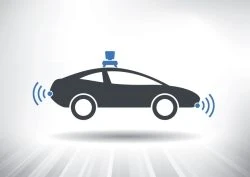
Last summer we posted about autonomous, or self-driving, vehicles and the progress that had been made in regard to these automobiles. At that time, Google had reported approximately 50,000 miles being traveled by these driverless cars. Because of the overall successful testing on interstates and highways by companies such as Google and Volvo, these self-driving automobiles are now being tested on city streets. This type of driving is oftentimes much more unpredictable than that of interstate and highway systems due in large part to the many moving objects and surroundings that a vehicle and driver faces while on city streets. For instance, there are stop signs and stop lights, pedestrians, other vehicles pulling out or turning, parked cars, and more for these autonomous vehicles to safely navigate.
Google’s self-driving car project has been very successful thus far, but must now expand into the more detail-oriented areas of U.S. roadways. According to Google, we have little to worry about because these self-driving cars are able to detect hundreds of objects at once, including buses, stop signs, cyclists, and pedestrians. As of June, these vehicles had logged over 700,000 miles of self-driving mode. That is a great leap from last year’s number.
The potential that these vehicles allow for is enormous. Because these autonomous vehicles do not require human intervention, they could allow disabled citizens the ability to commute independently. For instance, elderly citizens with slower reflexes, those who are hard of seeing or blind, and those without the physical means to operate a vehicle would be able to travel freely if self-driving automobiles become available to consumers. Not only that; but the amount of injuries and deaths caused by automobile crashes could potentially decrease with the addition of self-driving vehicles. Most automobile wrecks are caused by human error, so if the human is taken out of the equation, perhaps there will be less crashes, and therefore less injuries.
Unfortunately, all technological advances tend to have some issues and kinks that must be worked out. These self-driving vehicles make use of radar systems, GPS, computers, and other technology. If any of these systems were to fail or have kinks, the entire system could be in jeopardy. If the vehicle is in jeopardy, so are citizens around it. And even if these vehicles are released to the public once the technical issues are worked out, there is still a question of legality in the event of injuries. For instance, if a self-driving vehicle were forced to make the decision between hitting a pedestrian or another vehicle and it chose the latter, who is responsible for the vehicle’s passengers’ injuries and vehicle repairs? These types of questions will have to be addressed before self-driving vehicles are sold to consumers.
Regardless of the questions still surrounding these self-driving vehicles, there is a high potential for increases safety with the introduction of these self-driving cars. Needless to say, we will all be watching and listening for news on the further development of these vehicles.
Categories: Airbag Safety, Auto Accidents, Car Accident, Catastrophic Injuries, Distracted Driving, Drowsy Driving, Drunk Driving, Georgia Laws, Personal Injury, Rollover Accidents, Seatbelt Safety



